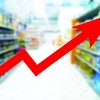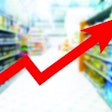
If you needed proof that even pet food isn’t immune from the big “ics” — geopolitics and macro-economics — consider this: The latest Facts and Figures report on the European pet food market from FEDIAF (Fédération Européenne de l'Industrie des Aliments pour Animaux Familiers, or European Pet Food Industry Federation), is based on 2023 figures because in 2024, the organization changed its data collection practices to exclude Russia.
That’s not the only change; FEDIAF also incorporated a set of countries new to the report to ensure the data covered all of the European Union, European Economic Area and most of the remaining Council of Europe member states. But the fact that the 41 countries in the report no longer include Russia in the wake of its war against Ukraine is notable.
Of course, that’s just one example; others include broad economic factors, regulatory uncertainty, trade policies and tariff wars, all of which can affect pet food supply chains.
Mid-year mixed results for pet food
Take macro-economics. In a recent poll of pet food professionals visiting the PetfoodIndustry.com site, 44% of the 318 respondents selected economic pressures or inflation impacts as the concern commanding most of their businesses’ attention to date in 2025. Shifting consumer preferences, which could be driven at least partially by inflation, tariff anxiety and other economic factors, garnered a 23.2% response. Supply chain disruptions and regulatory compliance issues each received a 13.6% response. Also clocking in were labor shortages at 5.6%.
Consequently, and not surprisingly, more than one-third of the respondents (34.6%) characterized their companies’ financial performance as “mixed results,” indicating strong performance in some areas while facing challenges in others. And for some respondents, challenges have reigned to date in 2025, leading to 15.9% of respondents reporting performance below expectations and 7% significantly underperforming. On the positive side, 24.4% respondents reported their companies are meeting expectations, and 18.1% reported exceeded projections.
Impact of government changes, policies on pet food
I’ve written previously about the toll of tariffs, including their on-again, off-again status, on both pet food consumers and pet food brands trying to run their businesses amid economic uncertainty. As a partial update, the majority of respondents, 88%, to the recent PetfoodIndustry.com poll reported revising their original 2025 business plans at some level. Just under half of that majority, 41.5%, said they’ve made only minor revisions, while 28% reported moderate ones; 18.7% have made major overhauls to their plans.
In a presentation to Petfood Industry’s parent company, Watt Global Media, during its annual meeting, Dana Brooks, president and CEO of the Pet Food Institute (PFI), listed headwinds her organization — which represents more than 90% of U.S. pet food companies — is facing. They include some market-related ones, such as market saturation and changing trends; that last one is impacted by regulatory changes and uncertainty, she said. Her list also included the broader impacts of tariffs and trade policies, the overall economy and inflation.
And, she commented on how changes in the U.S. federal government, especially agency workforces, are affecting PFI and the industry overall: “The reduction in force (RIF) has significantly impacted everything we do.”
This echoes concerns she and other experts expressed during the closing panel at Petfood Forum 2025 on the pet food regulatory situation in the U.S. For example, the number of reviewers of new ingredient submissions at the Center for Veterinary Medicine has fallen from 33 to about 22 due to a 35% budget cut, according to Todd Harrison, partner and co-chair of the FDA Group at Venable, a law firm that advises clients in the animal and human food industries.
Pet food: Fundamentally sound and adaptable
While all of the above paints a pretty bleak picture, the pet food market has proved its resiliency time and again, thanks in no small part to pet owners’ overwhelming love for their furry family members and commitment to feeding and caring for them well. Based on that, plus sound business and market fundamentals, we can hope for, maybe even expect, the industry to weather the current storm.
As my colleague Lisa Cleaver wrote in her report on the PetfoodIndustry.com poll: “The survey results suggest an industry that, while facing headwinds, maintains underlying strength and adaptability. The prevalence of mixed results rather than outright negative performance indicates that companies are finding ways to succeed in some areas even while struggling in others.
“The fact that most companies are making only minor to moderate strategic adjustments suggests confidence in their fundamental business models and market positioning,” she continued. “The challenge for industry leaders will be maintaining this adaptability while positioning for growth as economic conditions potentially stabilize.”


















